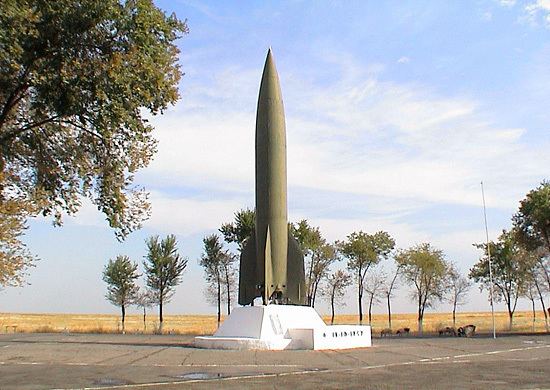Place of origin USSR Propellant Ethanol | Weight 13,430 kg (29,610 lb) Operationalrange 270 km (170 mi) | |
 | ||
Engine 27,200 kgf (267,000 N; 60,000 lbf) | ||
The R-1 rocket (NATO reporting name SS-1 Scunner, Soviet code name SA11, GRAU index 8A11) was a short-range ballistic missile manufactured in the Soviet Union based on the German V-2 rocket. Even though it was a copy, it was manufactured using Soviet industrial plants and gave the Soviets valuable experience which later enabled the USSR to construct its own much more capable rockets.
In 1945 the Soviets captured several key V-2 rocket production facilities, and also gained the services of some German scientists and engineers related to the project. In particular the Soviets gained control of the main V-2 manufacturing facility at Nordhausen, and had 30 V-2 missiles assembled there by September 1946.
In October 1946 the Soviets transferred the German missile engineers working for them to a special research facility near Moscow, where they were forced to remain until the mid-1950s. The Soviets established a missile design bureau of their own (OKB-1), under the direction of Sergei Korolev. This team was directed to create a Soviet capability to build missiles, starting with a Soviet copy of the German V-2 and moving to more advanced, Soviet-designed missiles in the near future.
In April 1947 Stalin authorised the production of the R-1 missile, the designation for the Soviet copy of V-2. The first tests of the missile began in September 1948. The system was accepted by the Soviet army in November 1950. The R-1 missile could carry a 785-kilogram (1,731 lb) warhead of conventional explosive to a maximum range of 270 kilometres (170 mi), with an accuracy of about 5 kilometres (3.1 mi).
In 1947, the R-1A was tested, a variant with a separable warhead. High-altitude scientific experiments were conducted with two of the R-1As, and later a series of specialized scientific rockets were built on the basis of the R-1: The R-1B, R-1V, R-1D and R-1E. These carried dogs, and experiments to analyze the upper atmosphere, measure cosmic rays and take far-UV spectra of the Sun.
The R-1's insulated electrical wiring attracted vermin. In one January 1953 incident, thousands of flood-displaced mice disabled many rockets by eating the insulation, requiring "hundreds of cats and repairmen".
